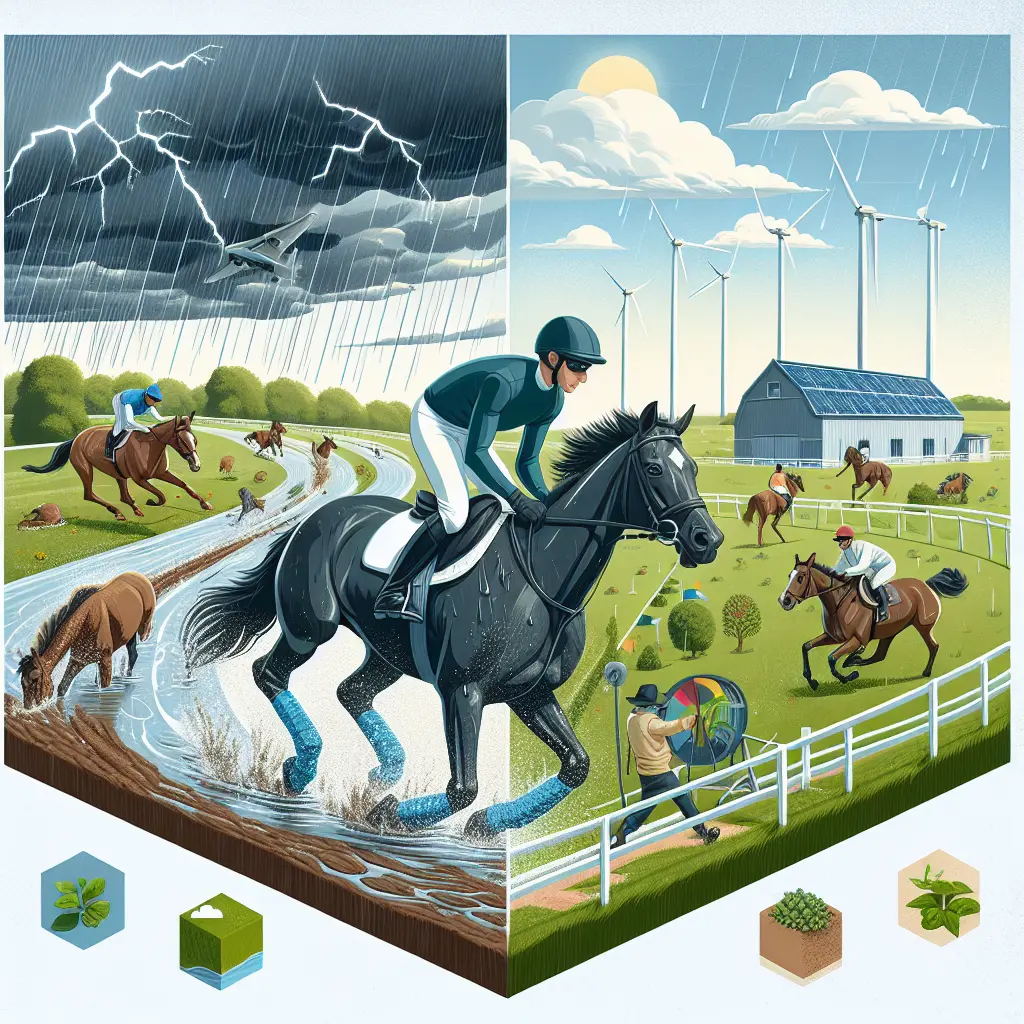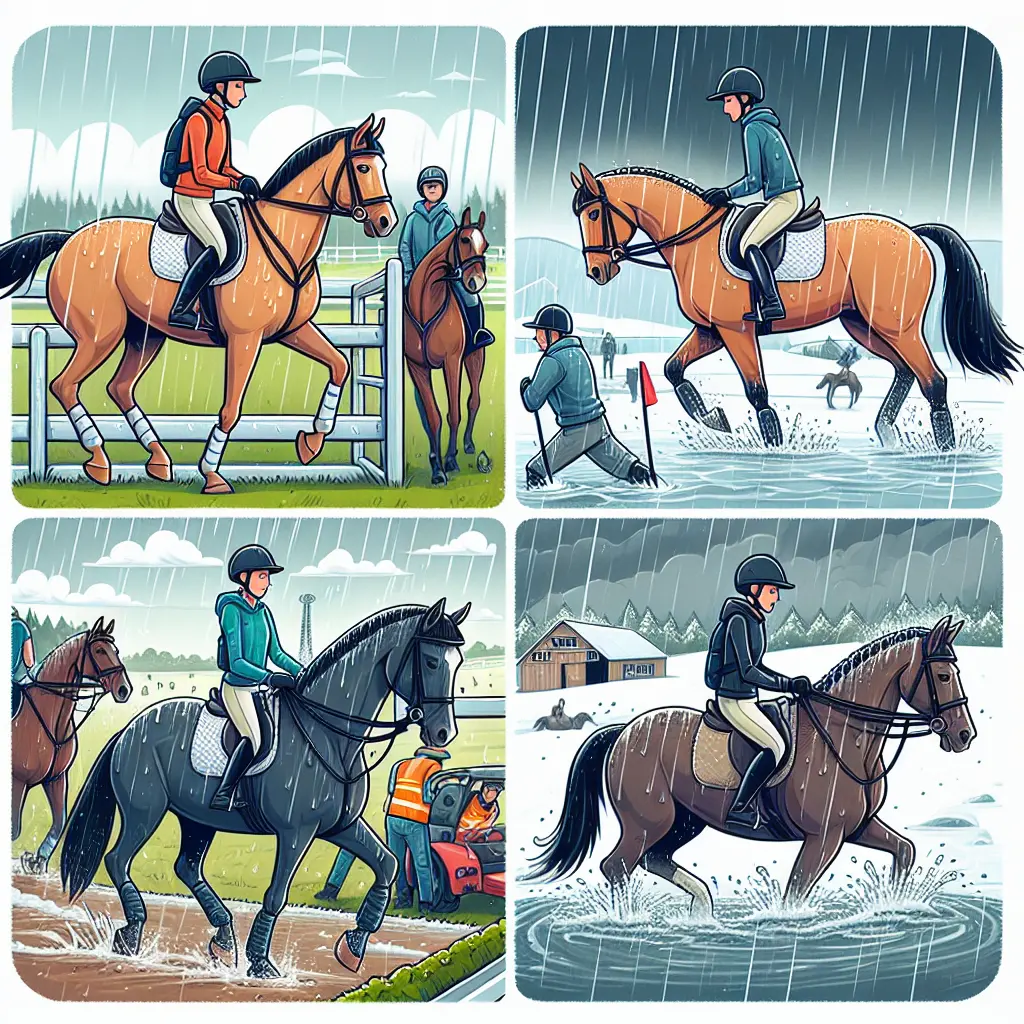Embracing the Elements: Equestrian Adventures and Challenges in Unpredictable Weather
Equestrian adventures are a thrilling concoction of excitement and challenges. However, throw unpredictable weather into the mix, and you've got a recipe for an adventure like no other. From high-stakes horse races to leisurely countryside rides, the elements can play a pivotal role in shaping the experiences of both horses and riders.

Effects of Weather on Equestrian Performance
Weather impacts equestrian performance significantly, affecting factors such as temperature, precipitation, humidity, and wind speed. Racehorses, for example, are particularly susceptible to these elements. High temperatures can induce heat stress in horses, reducing their endurance and leading to illnesses like anhidrosis or heat stroke.
Rainy Day Challenges
Precipitation such as rain can transform solid tracks into slippery terrains, increasing the risk of injury for horses. Racing in rain can also make tracks heavier, causing horses to tire faster. It compromises visibility, complicating decision-making for jockeys during races, as noted by Arioneo.
Weather and Equine Health
Beyond performance, the weather significantly influences equine health. Extreme weather events can increase the risk of infectious diseases among horses. For instance, warmer temperatures and increased precipitation can disturb ecosystems, leading to disease outbreaks, as discussed in The Horse.

Climate Change in the Equestrian World
Climate change is an ever-growing challenge within the equestrian landscape. Rising temperatures and unpredictable weather patterns necessitate adaptive strategies for maintaining both horse health and facility integrity. Equestrians are increasingly turning towards sustainable practices to mitigate climate-related issues, a trend highlighted by Colorado Horse Property.
Sustainability Practices
These adaptive strategies include conserving water through efficient systems and integrating renewable energy to power facilities. Embracing such sustainable practices ensures equestrian activities remain both enjoyable and eco-friendly.

Embracing the Elements
Despite the challenges, embracing the elements can enrich equestrian adventures, providing opportunities for growth and adventure.
Adapt Training and Preparation
Adjust Racing Approach: Horses may need to alter their stride and pace in wet conditions to maintain balance and avoid injury. Use Protective Gear: Ensuring both horses and riders are equipped with suitable gear for various weather conditions is crucial.
Invest in Sustainable Practices
Water Conservation: Implement efficient watering systems to minimize waste. Renewable Energy: Harness solar or wind power for equestrian facilities where possible.

Education and Awareness
Staying informed about weather forecasts and potential risks to equine health is vital. Participating in workshops or training sessions on climate-resilient practices can offer valuable insights.
Enhance Equestrian Facilities
- Weather-Resistant Materials: Use materials that endure extreme conditions.
- Improved Drainage Systems: Ensure facilities efficiently handle heavy rainfall, preventing flooding.
Gear Collection Pavilion
At Just Horse Riders, browsing our Jodhpur Collection ensures you're prepared for any weather. Combining style and functionality, our collection is designed to keep you comfortable and confident.
Additionally, explore our extensive collections to equip yourself and your horse boots, gloves, socks and more.
Beyond Gear: A Comprehensive Equestrian Approach
Equestrian safety and comfort extend beyond gear. Consider essentials like Stable Rugs and Turnout Rugs for temperature versatility, as well as Fly Protection against insects. Ensure your horse’s nutritional needs are met via our Everyday Horse Vitamins & Supplements.
Conclusion
In the fascinating dance between the equestrian community and Mother Nature, understanding the impact of weather is crucial. By adopting sustainable practices and utilizing innovative gear from trusted partners like Just Horse Riders, we can transform challenges posed by weather into pathways of growth and adventure. So, whether you're donning a raincoat or basking in the sun, let each ride deepen your connection with your horse and the environment.


